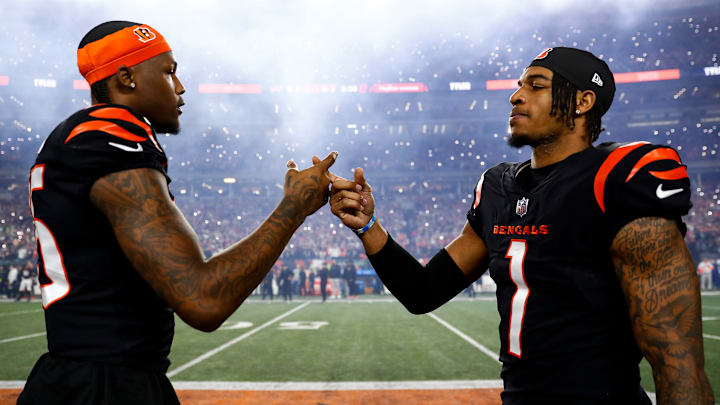Over the past four years, the Cincinnati Bengals have had two of the league’s best wide receivers flanking the perimeter. Although Ja'Marr Chase and Tee Higgins quickly established themselves as one of the league's best tandems, Cincinnati enjoyed the luxury of paying them pennies on the dollar. The duo combined for an average annual salary of $9.8 million in 2023, with Chase accounting for $7.7 million annually and Higgins' accounting for just $2.1 million annually.
As the wide receiver market began to skyrocket over the past few years, the tandem’s time together appeared to be coming to an end. Last offseason, Bengals owner Mike Brown — who hasn’t been known for investing heavily into building a winning roster — pointed to the salary cap to explain why the team was unable to reach a long-term agreement with Higgins, who ultimately played the 2024 season on a franchise tag for $21.8 million.
Yet, the Bengals seemed to change their tune this offseason, especially after some public lobbying by franchise quarterback Joe Burrow. Cincinnati made it clear that they intended to retain both wide receivers this offseason. It was a lofty endeavor, but they made good on their promise by signing both wide receivers to lucrative contracts on Sunday, according to NFL insider Jordan Schultz.
While contract details and guaranteed money is not yet available, here’s an early look at both deals and how the Bengals fared.
Ja’Marr Chase contract details
The Bengals signed Chase to a four-year, $161 million contract extension, making him the highest-paid non-quarterback in NFL history. Chase’s contract carries a whopping average annual value of $40.25 million.
Chase was expected to earn a record-setting deal after leading the league in receptions (127), receiving yards (1,708) and touchdowns (17) in 2024, but the figure is considerably higher than expected. Last offseason, Minnesota Vikings wide receiver Justin Jefferson signed a historic four-year, $140 million deal. Chase has toppled Jefferson’s $35 million annual salary by more than $5 million annually.
While Chase proved he was deserving of the contract, it’s fair to question whether the Bengals could have gotten a significantly cheaper price if they signed an extension last offseason, when Chase first became eligible for an extension. It’s hard to imagine Cincinnati fared better by waiting to sign the deal now. Chase made it clear that he wanted a new deal last offseason, and he was reportedly satisfied with a four-year, $140 million offer before the deal fell apart due to guarantee details. If nothing else, the team certainly would’ve avoided a lot of early-season drama.
Spotrac’s market value estimations projected Chase would earn a four-year, $141.7 million contract with $35.4 million annually.
Ja’Marr Chase contract grade: B-
Tee Higgins contract details
Higgins signed a four-year, $115 million contract extension, making him the highest-paid No. 2 wide receiver in NFL history. The 26-year-old will earn $28.7 million annually, which ranks sixth-most among all active wide receivers.
Higgins’ departure seemed inevitable at various points over the past year, even after Cincinnati delayed it by placing the franchise tag on him last offseason. When the team placed a franchise tag on him again this offseason for $26.1 million, it became apparent that a long-term was a realistic possibility.
Higgins, a second-round pick in the 2020 NFL Draft, finished the 2024 season with 73 receptions for 911 yards and 10 touchdowns. He will only be 26 years old next season despite already having five years of experience, and continuity with Burrow and Chase should help keep all three superstars effective and happy. The deal also doesn’t go too far above expectations, and it should help lower Higgins’ significant salary cap hit.
Spotrac’s market value estimations projected Higgins would earn a four-year, $109 million contract with $27.5 million annually. If Cincinnati signed Higgins a year ago, that figure was expected to be roughly $74.4 million.
Higgins has five games in each of the past two seasons and hasn’t reached the 1,000-yard mark since 2022, but some of that should downturn should balance itself out. The most significant downside of the deal is that Cincinnati is now investing nearly $70 million per year on their top two wide receivers. Along with Burrow’s $55 million annual salary, Cincinnati could run into salary cap trouble down the road.
